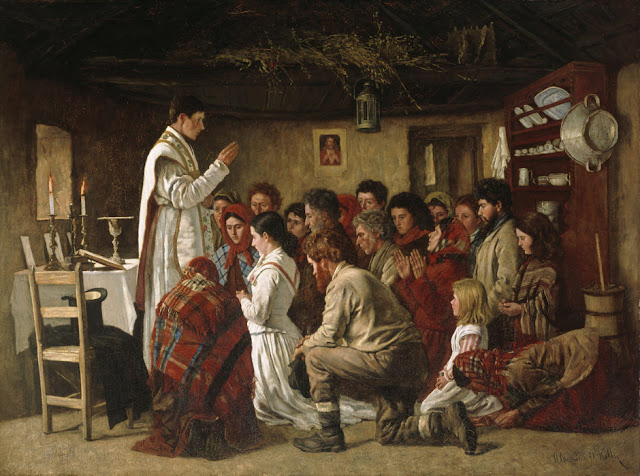And could it be that whatever scribe put the various documents of Vatican II into Latin did not do it accurately? Maybe the scribe had his own agenda?
But Paul Inwood thinks there's some hanky panky going on at the English Vatican website at is concerns Sacrosanctum Concilium:
"The most common translation of that oh-so-familiar first paragraph of Sacrosanctum Concilium 14 runs as follows:
Mother Church earnestly desires that all the faithful should be led to that full, conscious and active participation in liturgical celebrations which is demanded by the very nature of the liturgy. Such participation by the Christian people as “a chosen race, a royal priesthood, a holy nation, a redeemed people (1 Pet. 2:9; cf. 2:4-5), is their right and duty by reason of their baptism.
I wonder how many have noticed that the version which has been on the Vatican website in recent years has a subtle difference:
Mother Church earnestly desires that all the faithful should be led to that fully conscious and active participation in liturgical celebrations which is demanded by the very nature of the liturgy. Such participation by the Christian people as “a chosen race, a royal priesthood, a holy nation, a redeemed people (1 Pet. 2:9; cf. 2:4-5), is their right and duty by reason of their baptism.
The bold type indicates the change, from “full, conscious and” to “fully conscious..."

1 comment:
Sacrosanctum Concilium 14:
'Valde cupit Mater Ecclesia ut fideles universi ad plenam illam, consciam atque actuosam liturgicarum celebrationum participationem ducantur ...'
All the documents of Vatican II were drafted in Latin, and that language was used in all the plenary sessions. What Inwood calls the 'common' and 'oh-so-familiar' translation is in fact the correct one. 'Plenam' is an an adjective which agrees with 'illam', 'consciam', 'actuosam' and 'participationem' (accusative case, governed by the preposition 'ad').
In English, it is 'full'. 'Fully' is an adverb, which in Latin is 'plene' and the second translation is therefore incorrect.
There's a lesson here for those who presume to 'improve' translations without referring to the original text - no names, no pack-drill, but you know who you are!
Post a Comment